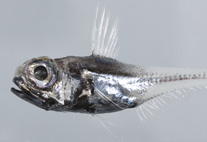Abstract
Anostracan zoogeography, biogeography, and habitat preferences have predominately been studied as related to the water quality parameters of their seasonally astatic wetland habitats. However, since water quality in seasonally astatic wetlands can fluctuate dramatically over a range of time scales, water quality data are generally of limited usefulness. Anostracan taxa occurrences in each of the nine North American anostracan bioregions across the United States of America were examined in relation to basic substrate geochemistry parameters (%CaSO4*H2O, %CaCO3, salinity, and dominate salt cations), and substrate type. Relationships between these parameters and the distributions of all 63 US species were discovered. Most anostracan species occurred only in habitats with specific geochemical ranges and attributes unique to that species. Additionally, three widespread species were found to occur in very different habitat types in different regions. Upon closer examination, these three taxa were each found to be comprised of more than one species.

